How do they get those bird pictures to look so good?
Jun 10, 2015 15:23:28 #
wteffey wrote:
Guess I'll have to take up Scrabble!
Or save your pennies -
Jun 10, 2015 15:28:23 #
Gene51 wrote:
Thanks!
These three are my favorites from this past season.
These three are my favorites from this past season.
Wow! on the Eagle pics Gene. :thumbup:
Jun 10, 2015 15:45:00 #
Greenguy33 wrote:
As a member of a few bird and wildlife pages on Facebook, I am amazed by the sharpness and quality of some of the images.
I have been trying to take photos like that, but I am not there yet.
Can anyone give me any tips? I think that sometimes I over process images in order to compensate for the poor out-of-the-camera image.
Are there any good websites or tutorials? Can you recommend some advanced books?
I have been trying to take photos like that, but I am not there yet.
Can anyone give me any tips? I think that sometimes I over process images in order to compensate for the poor out-of-the-camera image.
Are there any good websites or tutorials? Can you recommend some advanced books?
Wow! when you choose bird photography, I think you have just picked the most difficult area of wildlife photography. But that is what I do also. First of all websites: birdsasart.com; dougbrownphotography.com, & deepgreenphotography.com
I have learned a good bit about about bird photography and birds in flight photography.
If you compare your photos to what you see in magazines and on commercial websites. You must stop to realize that in addition to the skills that full time bird photography brings to you, that these photographers are also using the very best in equipment. That means high end bodies that shoot many frames per second and do well at high ISO, they are all using very expensive prime super telephotos, almost never zoom lenses. And they shoot a lot of frames. And they have practiced and shot tens of thousands of frames.
I took up this passion of bird photography and when I compared my equipment to the pro equipment, I was like the guy that took a knife to a gun fight. It ain't going to turn out like I hoped. That said, with what ever you have, you can get some very satisfying photographs. Check out Alan Murphy's website (he is a full time bird photographer), and he sells ebooks or articles on how to do... Check out the one on setups for your back yard feeders. That way you can get some birds closer, and the lenses make less difference. Consider going on one of Greg Basco's photo trips to Costa Rica. There the birds are very close most of the time and you don't necessarily need the big lenses. Consider renting a big prime for a special trip. Most of all keep shooting.
I am blessed in that I can afford most of what I want in camera gear, but even after getting a 600 f4 prime lens, my photos looked like crap. So I started learning and the photos got better and better. The first three photos were shot with my 600mm f4 and handheld, the loon photo was with the same lens, but on a tripod in a fishing boat.
Welcome to an exciting type of photography.
Ontario Canada, Great Blue Heron
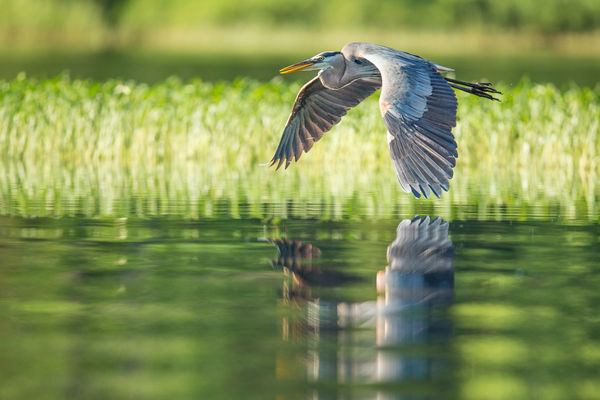
(Download)
American Kestrel, Bosque del Apache
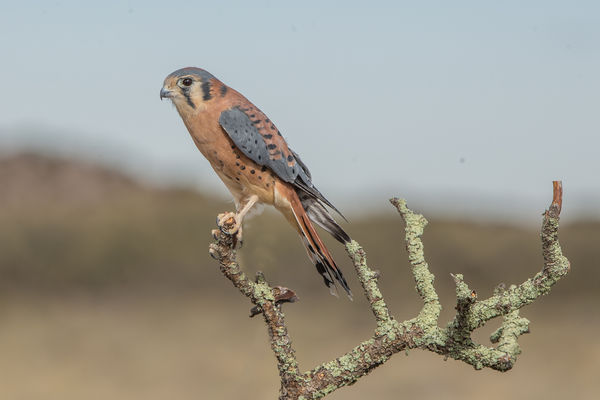
Bosque del Apache - Sand Hill Cranes
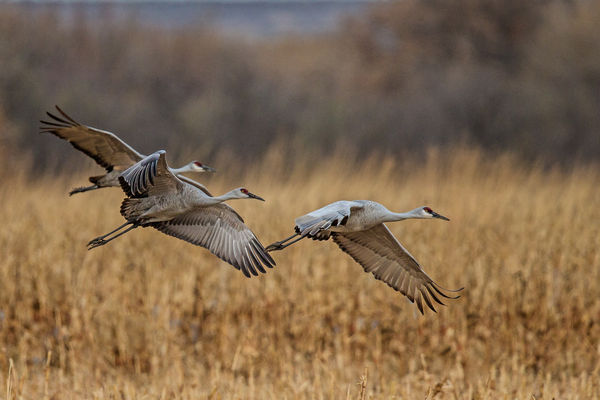
Ontario Canada, common loon
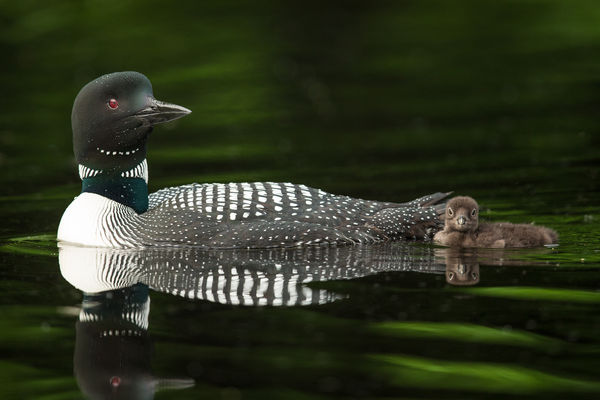
Check out Commercial and Industrial Photography section of our forum.
Jun 10, 2015 16:35:55 #
Shooting from a portable (or stationary) blind will get you closer, and any kind of dripping water will be attractive.
Jun 10, 2015 17:28:58 #
Greenguy33 wrote:
As a member of a few bird and wildlife pages on Facebook, I am amazed by the sharpness and quality of some of the images.
I have been trying to take photos like that, but I am not there yet.
Can anyone give me any tips? I think that sometimes I over process images in order to compensate for the poor out-of-the-camera image.
Are there any good websites or tutorials? Can you recommend some advanced books?
I have been trying to take photos like that, but I am not there yet.
Can anyone give me any tips? I think that sometimes I over process images in order to compensate for the poor out-of-the-camera image.
Are there any good websites or tutorials? Can you recommend some advanced books?
One of Scott Kelby's books starts with how to get tack sharp images. You need to do all those things.
Plus you need a high quality lens. Prime f2.8 telephotos produce the sharpest images but can be a big hit to your pocketbook.
Jun 10, 2015 17:36:25 #
Gene51 wrote:
A couple of suggestions. Do not get too close. The... (show quote)
Nice, but fess up to what lens you used and how much it cost!
Jun 10, 2015 17:37:48 #
wotsmith wrote:
Wow! when you choose bird photography, I think you... (show quote)
Love the Loon with the baby!
I'd like to get one with the baby on its back. I never have my camera when I see them like that.
Check out True Macro-Photography Forum section of our forum.
Jun 10, 2015 17:40:03 #
MtnMan wrote:
One of Scott Kelby's books starts with how to get tack sharp images. You need to do all those things.
Plus you need a high quality lens. Prime f2.8 telephotos produce the sharpest images but can be a big hit to your pocketbook.
Plus you need a high quality lens. Prime f2.8 telephotos produce the sharpest images but can be a big hit to your pocketbook.
I'm a big fan of fast prime telephoto lenses. They match up well with TCs.
However, unless the distance to subject is substantial the DOF field is very shallow. You'll want those larger birds positioned parallel to the lens.
A slow lens can be just as sharp at its sweet spot and have an advantage when shooting at moderate distances and bright light.
Jun 10, 2015 17:40:50 #
ptcanon3ti wrote:
That's a beautiful shot of a beautiful bird.
I need to ask a question:
How does aperture priority work with regard to bird photography? I understand what the modes do, therefore selecting your aperture and allowing the camera to choose your shutter speed...and iso if you've selected auto iso.
So.... In an activity, such as bird photography, where a fast shutter speed is needed (if not mandatory), how does guaranteeing an aperture, not a shutter speed, benefit?
I need to ask a question:
How does aperture priority work with regard to bird photography? I understand what the modes do, therefore selecting your aperture and allowing the camera to choose your shutter speed...and iso if you've selected auto iso.
So.... In an activity, such as bird photography, where a fast shutter speed is needed (if not mandatory), how does guaranteeing an aperture, not a shutter speed, benefit?
I usually shoot aperture priority, with the lens wide open or near wide open (to help isolate the subject). ISO will be high enough so shutter speed will be fast enough so that unwanted camera movement is not a problem (1/focal length (35mm terms) at least). IS/VR will help with slow moving or stationary birds as does a trippod or mono pod. Sometimes (depending on the light you will need to shoot at very high ISO values so be prepared to do some noise reduction when post processing. See example #1.
Of course if you want to freeze action you will need much higher shutter speeds. See example #2
#3 - This is the one that got me "hooked". Hand held during a walk in the same suburban park as pics #1 & #2.
Edit: I will dial in some exposure compensation if need be.
#1 1/200 @ f5.5 (wide open) and ISO 3200 (maximum) F=400 mm
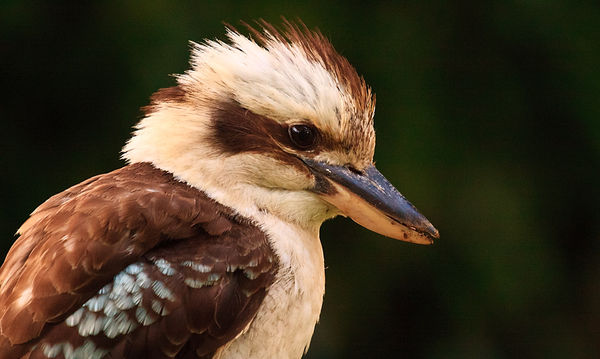
(Download)
#2 1/1000 @ f5.6 (wide open) ISO 1600 F= 260mm
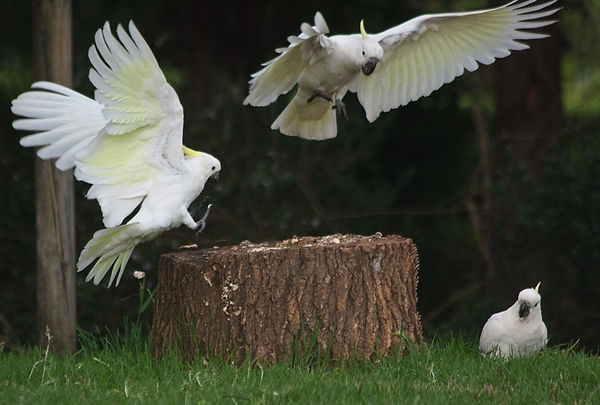
(Download)
#3 1/500 @ f6.3 (near wide open) ISO 800 and F=300mm (maximum) Hand held.
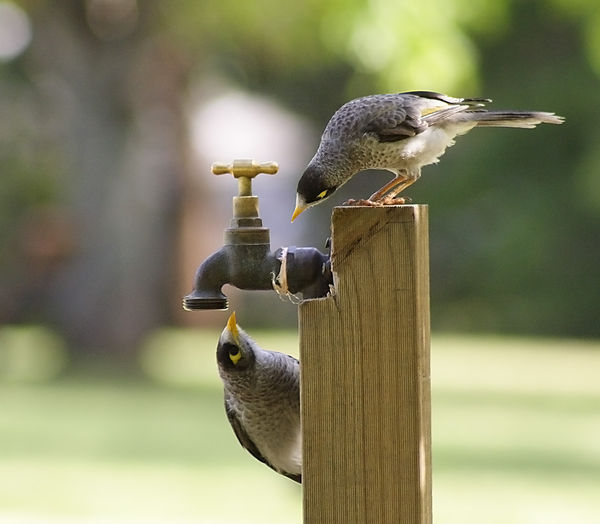
(Download)
Jun 10, 2015 18:23:10 #
You have receives a great deal of good information, may i add
FOCUS ON THE EYES of the bird or animal.
FOCUS ON THE EYES of the bird or animal.
Great Horned Owl
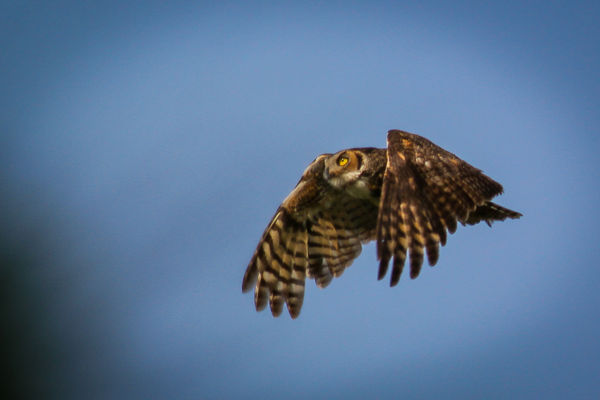
Jun 10, 2015 20:14:56 #
MtnMan wrote:
Nice, but fess up to what lens you used and how much it cost!
Too lazy to check the metadata? I think all were done with a D800 and a 600mm F4 and the heron nest was with a 1.4x on the lens.
Check out AI Artistry and Creation section of our forum.
Jun 10, 2015 21:05:56 #
Jun 10, 2015 21:35:00 #
This has been a very inspiring post. Nice pics. Thanks to everyone for the tips, suggestions and photos.
Jun 10, 2015 21:52:42 #
MtnMan wrote:
Love the Loon with the baby!
I'd like to get one with the baby on its back. I never have my camera when I see them like that.
I'd like to get one with the baby on its back. I never have my camera when I see them like that.
RE: the loon photos; when I was young i spent three summers canoeing in the boundary waters and fell in love with the sight and sound of loons.
So I fulfilled a desire to photography them and booked some help from a guide in Huntsville, Ont. Canada. I was shocked that we shot all our photos on a lake that had houses all around the bank; I expected wilderness. When i mentioned that the guide said on wild lakes we would never get within 200 yards of the birds. on a "in town" lake the birds were not shy and could get within easy range of a 600mm for full frame with no cropping. Shows what I know. 5 days in a fishing boat when the loons have babies and you'll get all the babies on the back you want. Email me if you want contact info for the guide. All photos with 600mm f4 on tripod in fishing boat.



This was photo of the week for birdwatching magazine
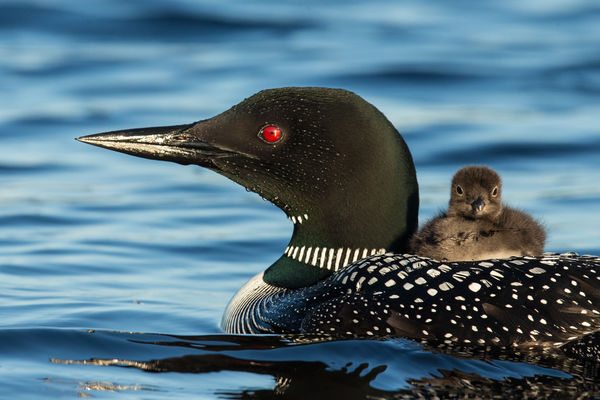
one of my favorites, no idea what the droplets are about
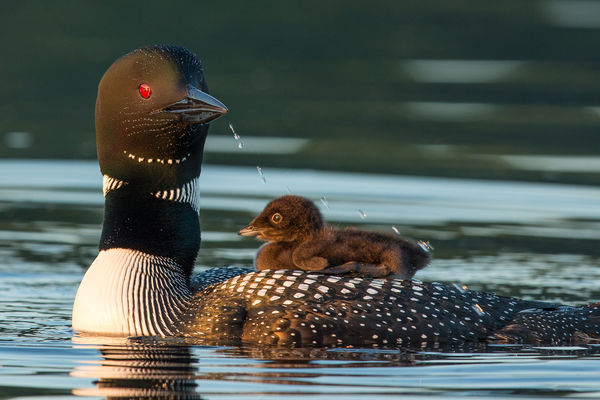
Jun 10, 2015 21:55:15 #
Lot's of folk use post-processing to make up for so-so lighting and average content.
The money shots cost money... LOTS of it, and time too.
Plus knowledge of bird behavior, the environment you are trying to photograph them in, and lighting.
Good gear plus skill, patience, and lighting is what you need to stand a chance at taking magazine quality images of birds.
Of course if you don't have any of those things you MIGHT luck up and get a great shot... but usually that doesn't happen, and it certainly doesn't happen regularly.
You want professional quality pictures... you have to spend money and time. No other way around it.
The money shots cost money... LOTS of it, and time too.
Plus knowledge of bird behavior, the environment you are trying to photograph them in, and lighting.
Good gear plus skill, patience, and lighting is what you need to stand a chance at taking magazine quality images of birds.
Of course if you don't have any of those things you MIGHT luck up and get a great shot... but usually that doesn't happen, and it certainly doesn't happen regularly.
You want professional quality pictures... you have to spend money and time. No other way around it.
If you want to reply, then register here. Registration is free and your account is created instantly, so you can post right away.
Check out Underwater Photography Forum section of our forum.








